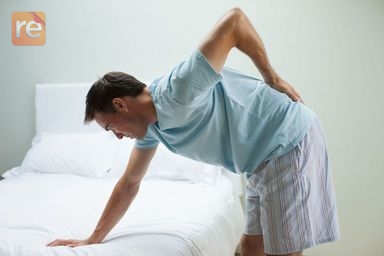Muscle Strain
Muscle strain, muscle pull, or even a muscle tear refers to damage to a muscle or its attaching tendons. You can put undue pressure on muscles during the course of normal daily activities, with sudden heavy lifting, during sports, or while performing work tasks.
Muscle damage can be in the form of tearing (part or all) of the muscle fibers and the tendons attached to the muscle. The tearing of the muscle can also damage small blood vessels, causing local bleeding, or bruising, and pain caused by irritation of the nerve endings in the area.
Symptoms of muscle strain include:
Swelling, bruising, or redness due to the injury
Pain at rest
Pain when the specific muscle or the joint in relation to that muscle is used
Weakness of the muscle or tendons
Inability to use the muscle at all
When to Seek Medical Care
If you have a significant muscle injury (or if home remedies bring no relief in 24 hours), call your doctor.
If you hear a “popping” sound with the injury, cannot walk, or there is significant swelling, pain, fever, or open cuts, you should be examined in a hospital’s emergency department.
Diagnostic tests
The doctor will take a medical history and perform a physical exam. During the exam, it’s important to establish whether the muscle is partially or completely torn, which can involve a much longer healing process, possible surgery, and a more complicated recovery.
X-rays or lab tests are often not necessary, unless there was a history of trauma or evidence of infection.
Muscle Strain Treatment Self-Care at Home
The amount of swelling or local bleeding into the muscle (from torn blood vessels) can best be managed early by applying ice packs and maintaining the strained muscle in a stretched position. Heat can be applied when the swelling has lessened. However, the early application of heat can increase swelling and pain.
Note: Ice or heat should not be applied to bare skin. Always use a protective covering such as a towel between the ice or heat and the skin.
Medication:
Take nonsteroidal anti-inflammatory drugs (NSAIDS) such as naproxen or ibuprofen to reduce pain and improve your ability to move around. Do not take NSAIDS if you have kidney disease or a history of gastrointestinal bleeding or if you are also taking a blood thinner — such as Coumadin — without first talking with your doctor. In that case, it is safer to take acetaminophen, which helps lessen pain but does not reduce inflammation.
Price formula
Protection, rest, ice, compression, and elevation (known as the PRICE formula) can help the affected muscle. Here’s how: First, remove all constrictive clothing, including jewelry, in the area of muscle strain. Then:
Protect the strained muscle from further injury.
Rest the strained muscle. Avoid the activities that caused the strain and other activities that are painful.
Ice the muscle area (20 minutes every hour while awake). Ice is a very effective anti-inflammatory and pain-reliever. Small ice packs, such as packages of frozen vegetables or water frozen in foam coffee cups, applied to the area may help decrease inflammation.
Compression can be gently applied with an Ace or other elastic bandage, which can both provide support and decrease swelling. Do not wrap tightly.
Elevate the injured area to decrease swelling. Prop up a strained leg muscle while sitting, for example.
Activities that increase muscle pain or work the affected body part are not recommended until the pain has significantly improved.
Medical Treatment
Medical treatment is similar to the treatment at home. The doctor, however, also can determine the extent of muscle and tendon injury and if crutches or a brace is needed for healing. The doctor can also determine if you need to restrict your activity or take days off work and if rehabilitation exercises or physical therapy are required to help you recover.
Prevention
Help avoid injury by stretching daily.
Start an exercise program in consultation with your doctor.
Stretch after you exercise.
Establish a warm-up routine prior to strenuous exercise, such as gently running in place for a couple of minutes.
Outlook
In most cases, with proper treatment, most people recover completely from muscle strain. More complicated cases should be handled by a doctor.

